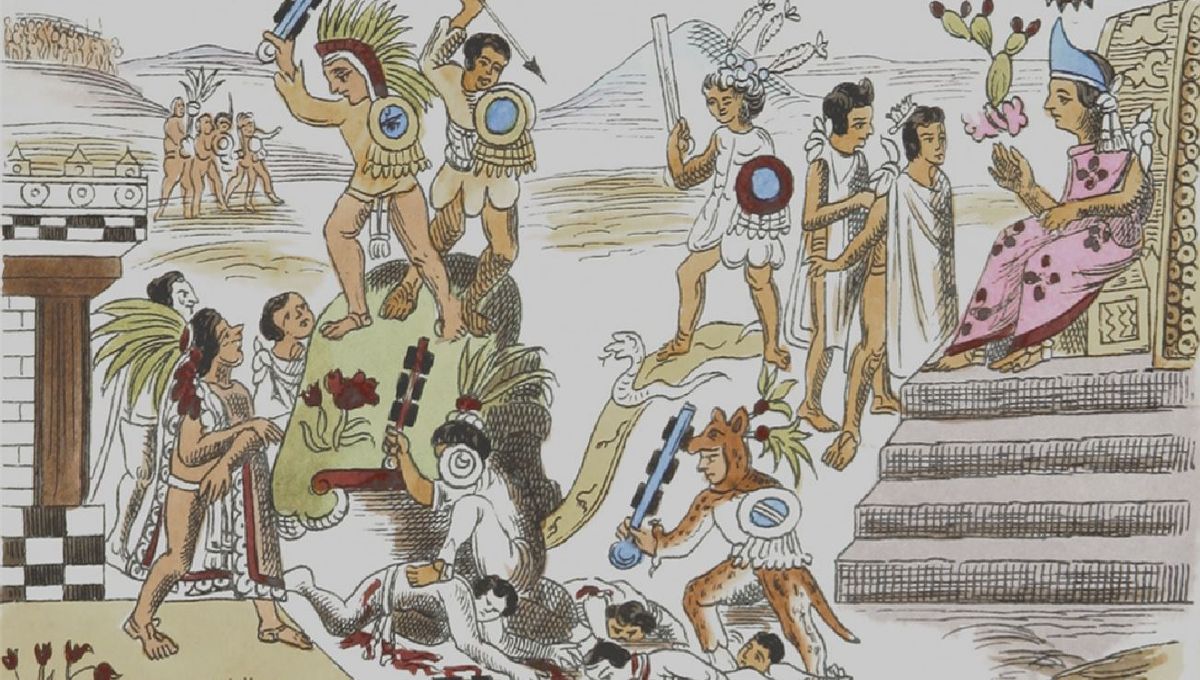
Long before Suzanne Collins dreamed up the notion of sending young tributes into deadly Hunger Games, the Aztecs devised their own system for pitting selected combatants against one another in highly organized mortal encounters. Known as xochiyaoyotl, or “Flower Wars“, these ritualized skirmishes are believed to have been held in order to secure a continual supply of human sacrifices to appease the hungry Mesoamerican gods, though scholars remain divided over the function they played in ancient life.
The history of these religious wars is somewhat sketchy, though we do know that they were contested between the so-called Aztec Triple Alliance – made up of the city-states Mexico-Tenochtitlan, Texcoco, and Tlacopan – and the nearby kingdoms of Tlaxcala, Huexotzinco, and Cholula. It’s also clear that the battles had nothing to do with flowers, although those who appeased the gods by dutifully dying in the xochiyaoyotl were said to have had a “flowery death.”
According to the earliest account of the origin of the Flower Wars – which comes from a Texcocan nobleman named Ixtlilxochitl – the idea arose following four successive years of crop failures, resulting in a catastrophic famine in 1454. Ixtlilxochitl explained that “the priests . . . of Mexico [Tenochtitlan] said that the gods were angry at the empire, and that to placate them it was necessary to sacrifice many men, and that this had to be done regularly.”
Shortly thereafter, a Tlaxcalan lord by the name of Xicotencatl is credited with suggesting that wars be organized with the express purpose of capturing enemies to use as human sacrifices. Supposedly, Xicotencatl sold the idea to the various feuding kingdoms by explaining that captive soldiers “would be very acceptable to them [the gods] as their food, being hot and fresh.”
The Flower Wars were therefore held from the 1450s until the Spanish conquistadores defeated the Aztecs some 70 years later. During these ritualized battles, enemies were typically captured rather than killed on the battlefield, and later sacrificed by priests who ripped out their still-beating hearts in order to appease the gods and ensure bountiful harvests.
Unlike other wars, which were fought by regular soldiers, the xochiyaoyotl were predominantly contested by members of the nobility. The style of combat also differed from that of typical battles, and centered around the use of close-quartered weapons as opposed to long-range projectiles, which the Aztecs relied upon to defeat their enemies in non-religious warfare.
However, while it’s widely accepted that the Flower Wars provided a steady stream of human sacrifice victims, not all historical sources support the idea that the battles started in response to a great famine. For instance, some accounts say that the wars were originally organized as part of an initiative to secure large numbers of sacrifices for the new Temple of Huitzilopochtli, which was built by Moctezuma I.
Some historians even argue that the purpose of the Flower Wars wasn’t linked to human sacrifice at all, but that the encounters were staged as a training exercise for young soldiers. However, others have dismissed this idea due to the fact that so many elite fighters were put forward as tributes in the Flower Wars.
Ultimately, we still aren’t totally sure why the Flower Wars were held, but what’s clear is that – like most things in the Aztec Empire – they were absolutely terrifying.
Source Link: The Aztec "Flower Wars" Were Way Less Pleasant Than The Name Suggests